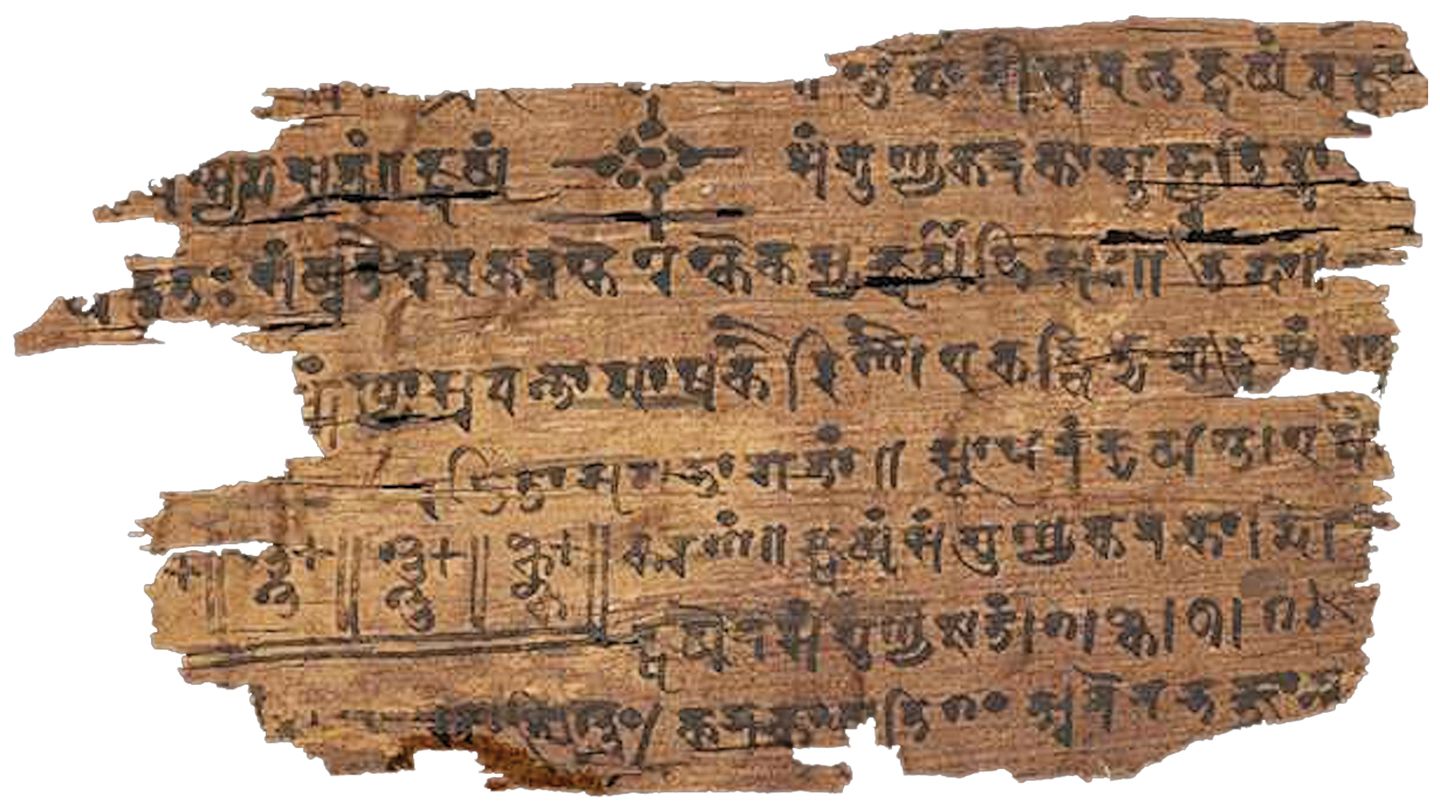
Did you know that ancient Indian mathematics laid the groundwork for many modern mathematical concepts? From the invention of zero to the development of algebra, Indian mathematicians made groundbreaking contributions that still influence us today. These brilliant minds, like Aryabhata and Brahmagupta, were pioneers in their field. They didn't just stop at numbers; they explored geometry, trigonometry, and even early calculus. Their work was not only advanced but also incredibly practical, impacting everything from astronomy to architecture. Ready to dive into the fascinating world of ancient Indian mathematics? Let's uncover 45 amazing facts that will blow your mind!
Key Takeaways:
- Ancient Indian mathematicians made groundbreaking contributions to algebra, trigonometry, and the decimal system, shaping modern mathematics and influencing cultures worldwide.
- Their work on zero, negative numbers, and astronomical calculations laid the foundation for many modern mathematical concepts and continues to be celebrated globally.
Ancient Indian Mathematicians
Ancient India was home to some of the greatest mathematicians who made significant contributions to the field. Their work laid the foundation for many modern mathematical concepts.
- Aryabhata, born in 476 CE, was one of the first to use algebra.
- Brahmagupta, an Indian mathematician from the 7th century, introduced the concept of zero as a number.
- Bhaskara II, also known as Bhaskaracharya, wrote the famous book "Siddhanta Shiromani" in 1150 CE.
- Varahamihira, a 6th-century mathematician, made significant contributions to trigonometry.
- Pingala, an ancient scholar, developed the binary numeral system around 300 BCE.
Mathematical Concepts and Innovations
Ancient Indian mathematicians introduced many concepts and innovations that are still in use today. Their work influenced various fields, including algebra, geometry, and trigonometry.
- The decimal system, including the concept of zero, originated in India.
- Aryabhata calculated the value of pi (π) to four decimal places.
- The concept of negative numbers was first used in India.
- Brahmagupta's work on quadratic equations laid the groundwork for modern algebra.
- Bhaskara II's "Lilavati" contains problems and solutions related to arithmetic, algebra, and geometry.
Geometry and Trigonometry
Ancient Indian mathematicians made significant advancements in geometry and trigonometry, which were crucial for astronomical calculations.
- The Sulba Sutras, ancient Indian texts, contain geometric principles used for constructing altars.
- Aryabhata's work included the calculation of the sine and cosine functions.
- Bhaskara II developed the concept of the "sine rule" in trigonometry.
- Varahamihira's "Pancha-Siddhantika" includes trigonometric formulas and tables.
- The concept of "R sine" (radius sine) was used in Indian trigonometry long before it was known in the West.
Astronomy and Mathematics
Mathematics and astronomy were closely linked in ancient India. Mathematicians used their knowledge to make accurate astronomical predictions.
- Aryabhata's "Aryabhatiya" includes a detailed description of the solar and lunar eclipses.
- Brahmagupta's "Brahmasphutasiddhanta" contains methods for calculating the positions of planets.
- Bhaskara II accurately calculated the time taken for the Earth to orbit the Sun.
- The ancient Indian calendar was based on precise astronomical calculations.
- Indian mathematicians developed methods for calculating the positions of celestial bodies.
Influence on Other Cultures
The mathematical knowledge of ancient India spread to other cultures and influenced their development.
- Indian numerals were adopted by the Arabs and later spread to Europe.
- The concept of zero was transmitted to the Islamic world and then to Europe.
- Indian mathematical texts were translated into Arabic and Persian.
- The work of Indian mathematicians influenced the development of algebra in the Islamic world.
- The decimal system was introduced to Europe through translations of Indian texts.
Mathematical Texts and Manuscripts
Ancient Indian mathematicians documented their work in various texts and manuscripts, many of which have survived to this day.
- Aryabhata's "Aryabhatiya" is one of the earliest known mathematical texts.
- Brahmagupta's "Brahmasphutasiddhanta" is a comprehensive work on mathematics and astronomy.
- Bhaskara II's "Siddhanta Shiromani" is divided into four parts: Lilavati, Bijaganita, Grahaganita, and Goladhyaya.
- The "Sulba Sutras" are ancient texts that contain geometric principles for altar construction.
- The "Bakhshali Manuscript," discovered in 1881, is an ancient Indian mathematical text written on birch bark.
Contributions to Algebra
Ancient Indian mathematicians made significant contributions to the field of algebra, developing concepts and techniques that are still in use today.
- Aryabhata's work included solving linear and quadratic equations.
- Brahmagupta introduced rules for manipulating negative numbers and zero in algebraic equations.
- Bhaskara II's "Bijaganita" is a comprehensive work on algebra.
- The concept of "Diophantine equations" was known to Indian mathematicians.
- Indian mathematicians developed methods for solving indeterminate equations.
Legacy and Modern Impact
The contributions of ancient Indian mathematicians have had a lasting impact on the field of mathematics and continue to be studied and appreciated today.
- The concept of zero revolutionized mathematics and computing.
- The decimal system is the foundation of modern arithmetic.
- Indian mathematicians' work on trigonometry is still used in modern astronomy.
- The methods developed by ancient Indian mathematicians are still taught in schools and universities.
- The legacy of ancient Indian mathematics is celebrated in India and around the world.
Fun Facts
Here are some interesting and lesser-known facts about ancient Indian mathematics that highlight its richness and diversity.
- The word "algorithm" is derived from the name of the Persian mathematician Al-Khwarizmi, who was influenced by Indian mathematics.
- The game of chess, which originated in India, involves complex mathematical strategies.
- The ancient Indians used a place-value system for numbers, which is the basis of the modern decimal system.
- Indian mathematicians used a unique notation system for large numbers, with specific names for powers of ten.
- The concept of infinity was explored in ancient Indian mathematics and philosophy.
Ancient Indian Mathematics: A Legacy of Brilliance
Ancient Indian mathematics has left an indelible mark on the world. From the invention of zero to the development of the decimal system, these contributions have shaped modern mathematics. Pioneers like Aryabhata and Brahmagupta laid the groundwork for algebra, trigonometry, and calculus. Their work influenced scholars across the globe, including in the Islamic world and Europe.
The precision and creativity of ancient Indian mathematicians continue to inspire. Their methods for solving quadratic equations, understanding the concept of infinity, and calculating astronomical phenomena were groundbreaking. This rich mathematical heritage underscores the importance of preserving and studying historical knowledge.
By appreciating these achievements, we gain a deeper understanding of how ancient civilizations contributed to our current scientific and mathematical advancements. Ancient Indian mathematics is not just a chapter in history; it’s a testament to human ingenuity and the quest for knowledge.
Frequently Asked Questions
Was this page helpful?
Our commitment to delivering trustworthy and engaging content is at the heart of what we do. Each fact on our site is contributed by real users like you, bringing a wealth of diverse insights and information. To ensure the highest standards of accuracy and reliability, our dedicated editors meticulously review each submission. This process guarantees that the facts we share are not only fascinating but also credible. Trust in our commitment to quality and authenticity as you explore and learn with us.


